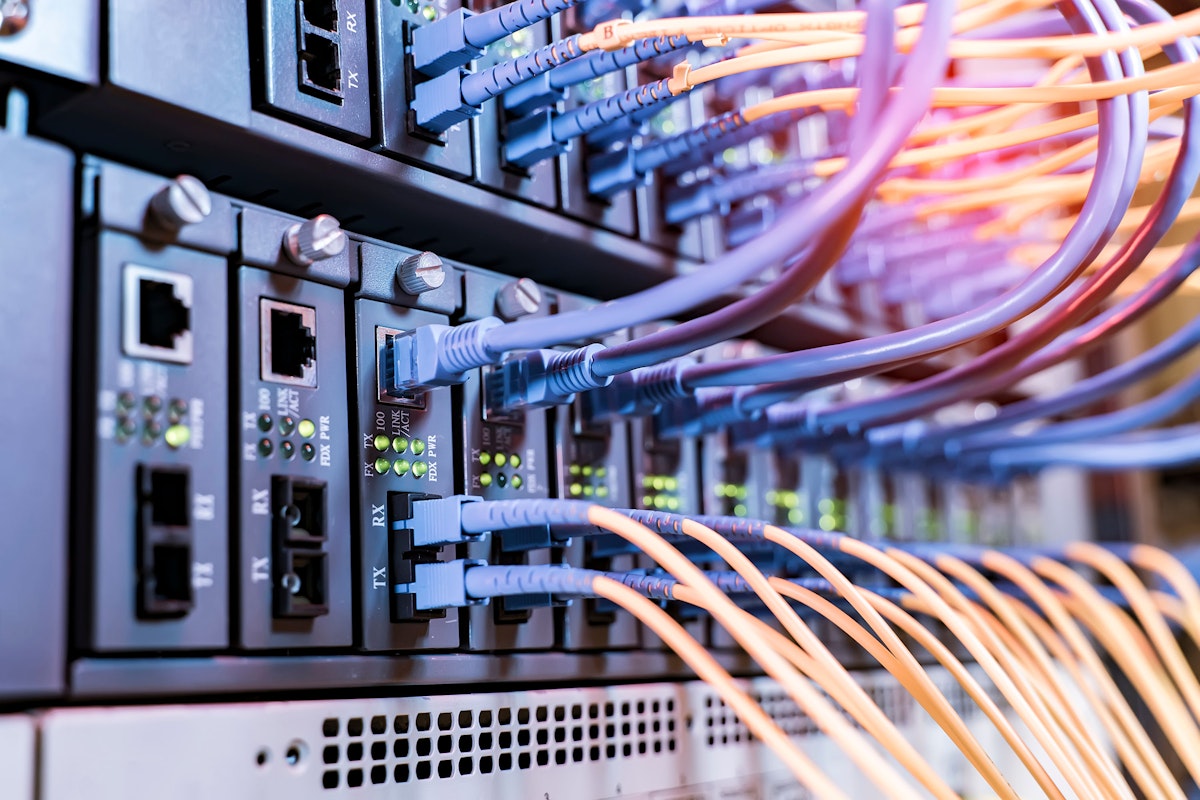Newer generations of processors are faster and more economical than their predecessors. You can create a simple PC with it, but also an excellent home server. Consumption averages around 10 watts, with some improvements this can be reduced even further. In this basic course we provide tips on clustering your server and reducing consumption. This is also possible without removing the server from the counter cabinet.
Nowadays, there are many mini PCs on sale with highly efficient processors of recent generations such as Jasper Lake and Alder Lake. These programs are generally powerful enough for a simple Windows computer. But it is also very interesting as a home servant. The idle consumption of these systems is often around 10 watts or less.
With some improvements, you can often achieve lower consumption. We provide tips for this in this article. We mainly focus on servers that have an x86 processor from Intel or AMD with removable memory. For storage, most systems have one or two SATA ports or an NVME connection.
Depending on your purpose, a Raspberry Pi based on the economical ARM architecture can also be a good choice. Although the differences are no longer so great. The Pi 4 consumes about 2.7 watts at rest, but in reality 3.8 watts is more realistic. When fully loaded, this Pi consumes about 6.4 watts. The Pi 5 is a bit more powerful and efficient. But with a budget Intel processor, you can definitely get close to these values. You also have extra power on hand when you need it.
1 economical mini computers
A mini PC is often a good and economical choice for a server. The NUC (formerly from Intel, now from ASUS) is a well-known example, but there are also more and more variants from other manufacturers. They use a budget variant of the processor which you often see in laptops. As a rule of thumb, when using it as a server, it's mainly the resting consumption (also called idle consumption) that's important, not the peaks you sometimes see. A good indicator is the low TDP (thermal design power) of the processor. For example, for Intel N100 this power is 6W and for N5105 it is 10W.
There are many cheap and economical mini-computers with these processors. Simply add one or two memory banks and an SSD drive for storage. Note that you can often use more memory than Intel specifies. For example, the Odroid H3 with the N5105 processor can accommodate up to 64 GB, while Intel states a maximum of 16 GB.
Another advantage of low TDP is that the cooling requirements are minimal. Most mini PCs only have their own metal cooling enclosure or passive heat sink, and are therefore completely silent. If you are going to put a heavier load on it, you can always add an external fan on top.
Powered by
2 naked
Do you want an economical and compact server, but want to choose the processor yourself? system like Asrock Disk Mini 310 For 8th and 9th generation Intel processors Disk Mini H470 For 10th and 11th generations it could be an attractive option. These systems are known for being economical, while also providing additional desktop power when it's needed. With both the H310 and H470, you can get an idle consumption of less than 10 watts and with the improvements, you can still get around forty percent. Although it also depends on the size of the work and the specific ingredients.
3 Self-building
When building your own car, you should of course pay close attention to the power consumption of all the individual components. You see many variations in motherboards. A small system is often more economical. In any case, try to avoid gaming motherboards.
When choosing a processor, the amount of processing power required is often overestimated. Not sure between Intel and AMD? Residual consumption is usually lower with Intel processors. On the other hand, AMD processors are often more efficient when getting a lot of work done. Low idle consumption is usually decisive when choosing a server. If you give the server a lot to do, AMD can become interesting again.
As far as storage is concerned NVMESD Often the most economical. If you don't need a lot of storage space, try avoiding 3.5-inch drives. Such a hard drive can easily add 8 watts to your consumption. It is also often best to avoid faster multi-gigabit network ports if the system needs to be very economical.
Also pay attention to the choice of power supply and choose an efficient one. If you're building a small server, PicoPSU is attractive. Have you bought a mini computer? Then you may consider replacing the power adapter with a more efficient model.
4 improvements
Some modifications to the BIOS settings are often needed to configure the server more efficiently. Default settings are often optimized for performance, not for lower power consumption. We provide tips for this in Section 9.
We have seen large supplies of mini computers from China in recent years. Note that these systems cannot always be properly optimized due to BIOS vulnerability. The Topton system with N5105 processor with Proxmox VE and pfSense consumes 13 watts, which is difficult to reduce. Although the four 2.5Gb/s network ports and using it as a router also affects consumption. Sometimes the Odroid H3 with the same processor is a bit cranky, but it is more economical and better for optimization. In any case, it is recommended to pay attention to the BIOS capabilities when purchasing.
5 Reduce the processor
Some tasks impose additional demands on the processor. Sometimes you can tame it somehow. For example, you can avoid video transcoding almost completely by using a good media player on your computer, such as Nvidia Shield. Do you still want to do this via the server? This does not always have to be done in software (and therefore via the wizard). Plex and Jellyfin can easily use the processor's built-in GPU for hardware transcoding. The Integrated Graphics Processing Unit (IGPU) is very powerful in the latest generations of processors and most of them can handle modern formats like HEVC/H.265 well.
Read also: Step-by-step plan: Create a media server yourself on your PC or NAS with Jellyfin
There are also other ways to reduce processor load, where you can definitely make gains in terms of consumption. A good example of this is advanced video surveillance software Frigate. A TPU like Google Coral is more efficient in calculations than a processor. Google Coral uses about 1 to 2 watts. If you let the processor do the work, about 10 additional watts will be needed. We measured this using the already very economical Intel Celeron N5105 processor in our test system. You will save approximately 30 euros per year. TPU of course offers further advantages, especially rapid detection of people or animals.
6 Measure consumption manually
When optimizing settings, it is of course necessary to know what the system consumes and what it gains from modifications. This is why we recommend a good power meter that measures the RMS value of the current (true RMS meter). An affordable option is Brennerstool PM 231E. The small and somewhat difficult to read display shows the consumption in watts. You can also track total energy consumption and energy costs over a longer period. Three batteries provide data storage in the event of a power outage.
7 Telemetry
Instead of a manual meter that you place on site to supply power to the server, you can also use a metering plug. In this article we used a version of HomeWizard for Wi-Fi, which is… Power socket. The advantage of this option is that you can monitor consumption remotely via the manufacturer's app.
Additionally, you can use Home Assistant, which allows you to record consumption in your energy dashboard. This measurement plug is also useful for performing a hard reset, in the event of a server crash. Set your server up so that it turns back on after a power outage.
The HomeWizard measuring plug is said to be individually calibrated for highly accurate measurements, although we haven't verified this. Please note that these meters have a small self-consumption. With a power socket, this is less than 1 watt.
8 Remote management
Many more expensive servers have the option to control your mouse, monitor, and keyboard remotely over the network. This makes managing the server much easier, although this function requires some additional power.
This, of course, lacks simple and economical systems. You can easily add it using PiKVM, an affordable self-build solution around Raspberry pie. This receives the image from the server via HDMI output and provides mouse and keyboard emulation. On another computer, you can log in via the browser, view the server image, and operate it using your mouse and keyboard. This also allows you to adjust BIOS settings or install the operating system.
Do you no longer need PiKVM after use? Remove the cables to the server. It often makes a difference in consumption if there is no monitor connected to the server. You can read more about PiKVM in the article This is how you manage your computer remotely using KVM.
9 BIOS settings
If you want to optimize the power consumption of your server, BIOS and operating system settings are important. Before starting, it is recommended to update the BIOS: new versions sometimes resolve power management issues, for example.
Moreover, it is little customizable. Every system is different. However, the processor is responsible for a large portion of the power consumption. You'll make the most profit by enabling C-states. These C-states are a type of low-power mode for the processor. With the DeskMini H470, you can reduce consumption by approximately forty percent. You can only do this in BIOS C3 Up to and including C10 And the C-state package support on maybe Instead of up car To make.
Another cost saving option is ASPM (Active State Power Management). Using Odroid H3 you can set this option via Chipset/PCH-IO configuration. Then go to PCI Express configuration And choose Pkiii 1, 2 And 5 bee ASPM Option car.
10 operating system
Some improvements are often possible in the operating system. For example, Powertop is a useful program for finding out details about your computer's power consumption. You will receive suggestions to save energy. You can install it under Ubuntu or Debian using the command:
apt install powertop
You can then run the tool with the command:
powertop
The statistics are distributed across six screens that you can use Unpaid invoice And Shift+Tab Browse through. less summary You can see which processes and components consume the most power and activate the processor most often. These processes often preclude the use of the more economical C cases.
less Disciplinary You can see which settings you can still save. You can do this automatically from the command line with the command:
powertop --auto-tune
You have to do this again after every reboot. Also keep an eye on it from time to time, because a kernel update can easily affect consumption due to changing drivers and require new procedures.
11 Sleep mode monitoring
In Debian, you can use a setting to put the monitor to sleep and the IGPU to low consumption mode. To do this, edit GRUB with this command:
nano /etc/default/grub
Make sure the line below is present in the configuration (or set it) as follows:
GRUB_CMDLINE_LINUX_DEFAULT="quiet consoleblank=15"
Save the file using Ctrl+O Exit the editor using Control+X. Then commit the changes using the command Grub update And restart the system.
Powered by

“Thinker. Coffeeaholic. Award-winning gamer. Web trailblazer. Pop culture scholar. Beer guru. Food specialist.”



/s3/static.nrc.nl/wp-content/uploads/2024/04/26152545/data114819028-6ce62a.jpg)



More Stories
The footprints of an overgrown bird of prey have been discovered in China
Very affordable headphones with many functions
It's not heaven in the new trailer for STALKER 2: Heart of Chornobyl